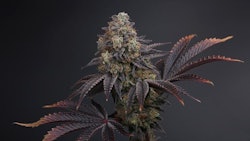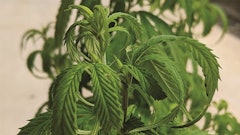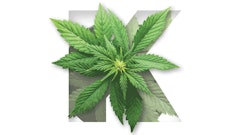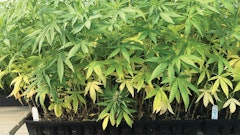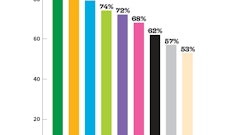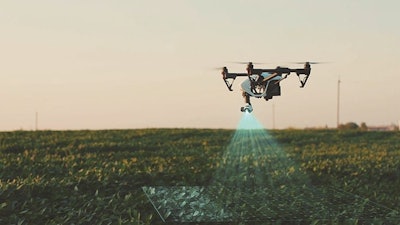
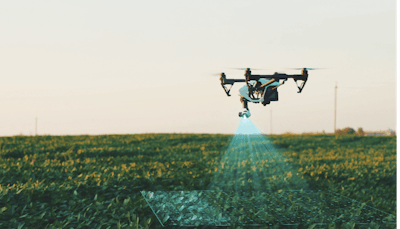
Long ago, I was at home watching an interview with Stanford University professor and engineer David Kelley, during which he explained how he formed his initial company David Kelley Design (DKD), later renamed IDEO after merging with two other companies.
Kelley also explained how he found himself at a Stanford dinner event, seated at a table with people he had never met. Kelley struck up a conversation with the man next to him and explained how he intended to create a design company that was a combination of experts in multiple fields, with the intent to focus on the design and efficiency of products and services.
The gentleman listened to Kelley intently, told the professor that he liked the idea, gave Kelley a business card and asked the engineer to give him a call to discuss the details. Kelley put the card in his pocket and gave it no more thought. Sometime later, a friend inquired about the dinner and if he had an enjoyable evening. He replied that he had but did not know any of the other attendees; however, he had a nice conversation with a gentleman at his table that oddly enough had expressed interest in his company idea and asked him to give him a call. The man turned out to be the investor who ultimately helped Kelley launch his company.
That chance encounter also led to Kelley and his team meeting and working with Steve Jobs on creating the computer mouse in 1980 for Apple’s Lisa computer, the MacIntosh’s predecessor. Both the Lisa computer and the resulting mouse were revolutionary—in fact, that mouse design (which used a ball with rollers to capture movement) remained essentially unchanged until the arrival of the optical mouse.
Besides finding the story amusing, I have always been intrigued by the function of IDEO and the premise of assembling a group of experts from different backgrounds and with diverse perspectives on problem solving and design. Such a company focused on the cannabis industry would be quite something, as innovation needs to accelerate to meet the demands of today’s rapidly evolving market. Public universities, normally a prime site for research and innovation, generally have steered clear from the cannabis industry as to not risk losing federal grants—although that trend also is shifting.
I recently read a press release about how scientists at Texas A&M University use a handheld laser device called a Raman spectrometer (RS) to determine whether a cannabis plant is over the federally legal 0.3% THC limit without affecting the chemical or physical composition of the plant material. Researchers noted that their device detects THCA, and a RS predicts the amount of total THC (delta-9 THC and THCA) in the analyzed sample without converting THCA to THC. The proposed use for the device is to help law enforcement, farmers, or buyers determine whether a plant is legal hemp or higher-THC cannabis.
The significance of this kind of research is multifaceted: first, that a major university such as Texas A&M would be researching anything related to cannabis was unthinkable not so long ago, and second, there is a huge prospect for a cannabis think-tank or IDEO-type of company to pioneer the next rendition of cannabis technologies. So much opportunity exists to innovate and create purposeful tools to improve cannabis cultivation. Cannabis cultivators have always been ingenious by finding creative solutions to complex problems, but jerry-rigged solutions aren’t ideal and sometimes don’t hold up in a true commercial cultivation setting.
Many times in my career I’ve wished for equipment or technologies that did not or do not exist. Besides the truly nonsensical (I’m still waiting on my flying DeLorean and hoverboard), here is a short list of a few technologies I always wish existed for cannabis.
1. Self-contained tissue culture laboratory
As companies expand or upgrade their facilities, they will (re)investigate most commercial production methodologies. One of those methods will be meristem tissue culture. The main advantages of tissue culture versus alternative current practices is that one can literally store millions of cultures in a relatively small space with minimal environmental control. Many commercially produced crops, ranging from pineapples to orchids, are propagated via tissue culture.
I see the need and use of a pod or shipping container-type of self-contained tissue culture lab that is complete with HEPA filtration and ventilation, with separate laminar flow hoods for multiple workers sitting at cell culture stations. A larger container could seat many tissue culture technicians, and another container could possibly hold millions of cultures or plants for hardening off.
I believe the need for such a tissue culture lab to exist will soon be in demand as large-scale production becomes the norm. If a company wanted to expand the capabilities of tissue culture beyond the capabilities of the mobile lab, the container remains a tangible asset that can be sold as opposed to building out a permanent lab that becomes a non-recoupable asset.
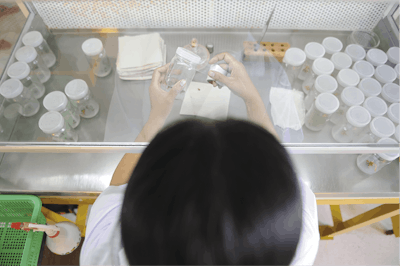
2. Cannabinoid and terpene content meter
Needless to say, the possibilities of the Texas A&M RS technology intrigues me very much. I’ve always wanted a handheld device that determines both peak cannabinoid and terpene content of a cannabis or hemp specimen on the live plant without compromising the specimen in any negative way. I contacted the director of this research at Texas A&M, Dr. David Baltensperger, Ph.D., who explained that he worked in the field of lasers. He said the use of devices such as the RS and the research I was referencing was performed by a conglomerate of multiple researchers, and that the field has hundreds of millions of dollars invested.
The industry needs to develop a very precise and accurate method to easily measure both cannabinoid and terpene levels
3. Large scale HEPA filtration for air intake (and exhaust)
A now-defunct company named ENTAS once produced a mobile shipping container as a large scale HEPA air filtration device amid the anthrax mailing scare. It featured multistage filtration that was serviceable, portable and capable of filtering out contaminants such as powdery mildew and pests. I believe greenhouse and indoor growers would benefit from such an air filtration system that both filters and sterilizes for specific cannabis pests and diseases. I also believe there is a similar need for an air exhaust filtration apparatus as well, specifically one that filters and eliminates odors while collecting any residual moisture for reuse in irrigation.
4. More artificial intelligence (AI)
An article in the April 2020 issue of Cannabis Business Times addressed existing AI technologies. The article noted that cannabis production technology is in its infancy, and there are many opportunities to perfect it for commercial cannabis production. Whether utilized for analysis by comparing one harvest or growth cycle to another, there is much opportunity to learn from AI and data analytics platforms. Currently, existing AI technologies are being employed to monitor plant traits, stress, and pest pressure. There are many commercial crop producers that employ AI in one form or another—even if it is simply benefiting from the data of another grower or research project. I see a wealth of potential for both the producers of cannabis- specific AI technology developers as well as the end users of such future technologies.
5. Real-time analyzer that measures moisture uptake and nutrient use
To have the ability to measure the amount of nutrient applied and correlate that to what the plant is metabolizing and exactly when would be extremely useful in achieving resource efficiency (and cutting costs). Current methodologies to determine nutrient availability uptake include measuring pH, electrical conductivity (EC) and analyzing the parts per million (PPM) of the nutrients applied. There are two main ways to determine the PPM of NPK nutrients in plants. The first is through plant sap analysis which, as the name implies, analyzes the contents of fresh sap by removing a sample from the plant and squeezing out the sap. There are handheld meters that can determine NO3-N and K, but not P. For all three nutrients, whole leaf samples would have to be submitted to a commercial lab conducting sap analysis. The second is leaf tissue ash analysis, whereupon a specimen is removed from the plant and is placed into a ceramic crucible with acid, and then either incinerated in a oven or microwave digested. The resulting ash is analyzed for its NPK and other nutrient concentrations.
Devices that measure how much water is traveling through the main stock of a plant exist, but what is lacking is an analyzer that correlates both nutrient and water content data into something tangible in real-time.
Other areas in which I see opportunities for improvement are:
- Commercial scale soil/media sterilizers besides steam or electric.
- Hemp/cannabis-based, childproof cardboard for cannabis packaging. (There are companies producing hemp-based plastic for cannabis industry packaging.)
- Multi-use electrostatic sprayer on wheels that not only could be used for foliar feeding or pest control, but also has capabilities such as a separate water pump to allow a technician to drain reservoirs or easily pump water where it is needed or to be reused—all with on/off capabilities, quick disconnect fittings, etc. This would basically be a multi-use water pump on wheels with many applications.
Steve Jobs was well-known for debuting some of his latest, most important Apple products at what appeared to be the end of presentations featuring an already monumental technology unveiling with the words “one more thing.” What’s “one more thing” the cannabis industry can add or refine to make cultivation and production better and improve upon what we’re doing? Perhaps fresh eyes from outside of the industry will lead to something great, that “one more thing” that’s a game-changer.









